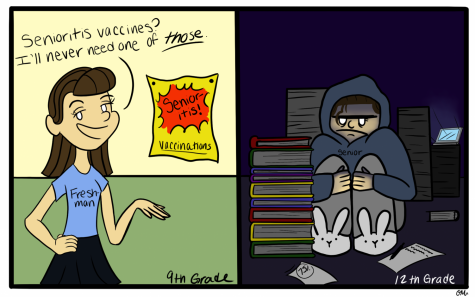How Student Rights Differ for Minority Groups in High School Education
The issue of student rights is a highly debated topic, but there is no denying that they are essential for a student’s quality of education. Although schools are rarely completely unethical with their students, there are many occasions where certain high schools tend to exhibit bias towards a certain group of students, whether it be based on intelligence, athleticism, or in this case, race and ethnicity.
Student rights is a broad umbrella term, and it is at the center of these types of debates. What will be discussed is the treatment of the student by peers, teachers, and mentors. After all, respect is a basic human right. Although it may vary from district to district, freedom of speech is a vital factor in this argument.
It is non-negotiable that white students are not marginalized in their school environment when they are within predominantly white school districts. They are given the correct opportunities and respect that everyone else is given because they have similar backgrounds to their peers. But when a student of a different race or ethnicity enters the school building, the issue of ethics comes into play. As a result, they are part of a minority group because they are visibly different from their peers. However, the problem that arises is whether or not they are receiving the same opportunities, guidance, and treatment as everyone else would even though they are in a minority group at the institution they attend.
Many people would respond to this issue with a resounding “no.” The argument poses that there is an unequal opportunity in the area of race and education. Although we have moved far from the times of Brown v. Board of Education, the color line can still divide us all. Because white individuals are not affected by the vestiges of discrimination, they believe that it has disappeared and there is no need to protect the opportunities of the marginalized if everyone is equal. However, many students, especially those marginalized, believe that this could not be farther from the truth.
According to Linda Darling-Hammond of the Brookings Research Group, black and Latino students had lower average standardized test scores compared to those of white and Asian groups. Because we live in a much more accepting and equal climate today, the assumption is that it must be that these minority groups tend to lack the effort or generally do not apply themselves as much as white and Asian students may. However, this is why the issue of student rights arises. This idea is so damaging because it equates a student’s academic failures to be only their own faults. Oftentimes when students in the minority struggle, they are not provided with the resources to do better like their counterparts since there has always been a nature of educational inequality. It is discriminatory in itself to assume that minority groups get lower scores because of their culture or makeup. So, this automatically violates a student’s rights by being respected less than anyone else.
Minority students tend to feel looked down upon compared to white students, not just because of their race or ethnicity, but because they have big shoes to fill from the pedestal that white high school athletes and scholars are placed on. By being part of a much smaller group of people, there are fewer school officials in the district that know how to cater to people of color in white-majority schools, so they are automatically given very high expectations to compare without being given the resources or opportunities to truly thrive. If a minority student were to complain about the treatment they are receiving and how they are not getting the help they need to succeed, the school could react with the idea that since they do not have enough experience with minority groups, they are trying their best. But at most times, their best is still not substantial enough because the focus and curricula are still favoring the needs of the majority and disregarding the marginalized.
On the other side of this argument, it is said that all of these issues with minority student rights are because of the much more racially sensitive climate that we live in today than compared to the past. Because this generation tends to consider race and ethnicity as a salient factor in the differing treatment of individuals, it can sometimes become overanalyzed. In this day and age, everyone under the law is guaranteed the same human rights. Even though injustices or variances in opportunities may arise amongst the majority and minority groups and students, our legal system tells us that discrimination is wrong in any sense of the word.
However, the rebuttal to this argument is that even though it is true that students should all enjoy the same rights and opportunities, inherent racial bias gets in the way of a minority group’s right to succeed by their superiors, whether the bias presents as subconscious or malicious.
Either way, the dilemma is blatantly obvious. There is a difference in the level of student rights that individuals of minority groups enjoy as opposed to the majority group. Although the cause for such a matter can vary from case to case, it is clear that for biased school districts and districts where the minority group receive little support academically and socially, it is much more common that the list of opportunities they are given are lesser than the students in preponderance.




